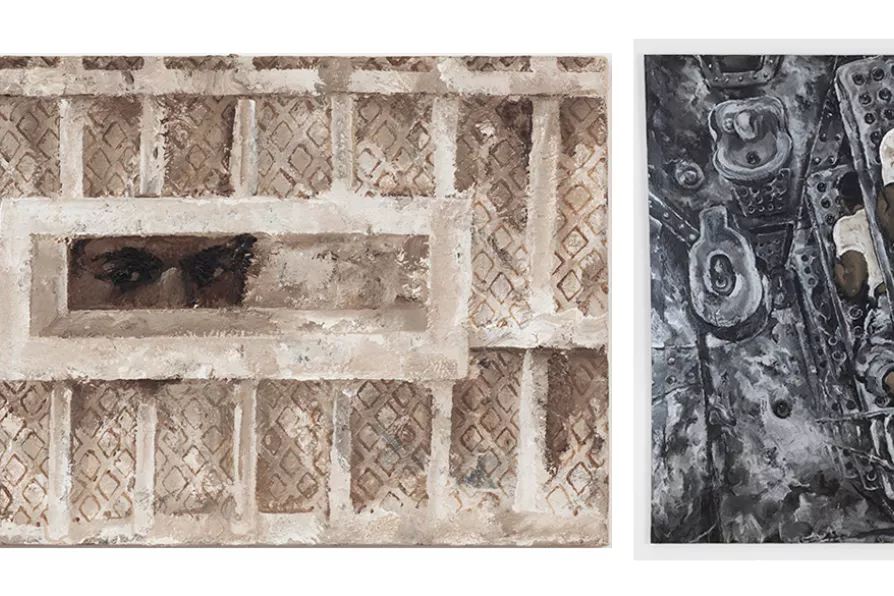
 Cell Door Slot, 1986, Acrylic on canvas; Prison Bunk Beds, ca. 1988—91
Acrylic on canvas
[Courtesy of the Martin Wong Foundation]
Cell Door Slot, 1986, Acrylic on canvas; Prison Bunk Beds, ca. 1988—91
Acrylic on canvas
[Courtesy of the Martin Wong Foundation]
Martin Wong, Malicious Mischief
Camden Arts Centre
MARTIN WONG (1946–1999) is a free spirit, and Malicious Mischief is peculiar in the good sense; peculiar to something, rather than weird. What he is peculiar to is the queer and immigrant scenes of west and east coast America, with a sort of controlled playfulness. And boy could he paint.
Some of the figures can seem like Robert Crumb cartoons, and then you see a foreshortened body like one of Michelangelo’s. There’s homage to Peter Blake’s detritus in shop windows. Some clean line painting, and then a scumble of oil paint as delicious as Rembrandt or Bacon.
But Wong is his own man and paints human life struggling against decay in a money-obsessed America. His textured walls, brickwork and gates are full of the fading hope of people who might have seen America as a second chance, rather than an opportunity for money making.

Essays on contemporary Latin American feminism, a poetry debut by a queer Texan of Mexican heritage, and a lush volume of tango and milonga drawings













